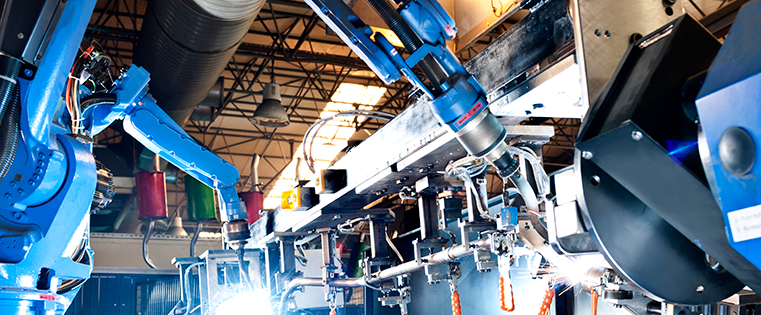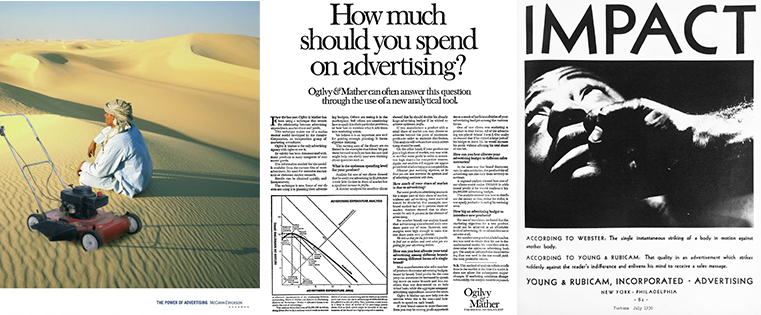 On July 28, 2007, I wrote that I was changing my agency’s business model from a traditional business model to a “virtual agency.” Drawing inspiration from innovative firms like Host Universal of London and jo&co of Salt Lake City, I abandoned the slow and paperwork-heavy approach of the typical “ad agency” and adopted a more client-focused approach to solving marketing problems.
On July 28, 2007, I wrote that I was changing my agency’s business model from a traditional business model to a “virtual agency.” Drawing inspiration from innovative firms like Host Universal of London and jo&co of Salt Lake City, I abandoned the slow and paperwork-heavy approach of the typical “ad agency” and adopted a more client-focused approach to solving marketing problems.

So, four and a half years later, how’s that working out?
In short, very well. But there’s always more to the story, right? This is the rest of that story.
Many clients have responded to their dissatisfaction with the traditional agency model by either bringing certain services, such as creative, in-house, or by piecing out certain business, such as media buying, to competing agencies or niche providers. The agencies themselves (or more to the point, the proprietors of certain agencies) responded to this threat by saying, “Hey, we should do that, too!”. Instead of having to hire and manage the best talent in every nook and cranny of the global communications service space, we contract, as needed, with the best agencies or other providers. We substantially reduce our risk and exposure by contracting only the services we’ve sold for better profits, better cash flow, better cost controls and a greater talent pool.
What could be wrong with that?
In a virtual agency, conceptually, the agency itself (as well as the agency model) becomes fragmented (by definition) and allows for a more streamlined and organic approach to delivering creative product. What’s missing, however, is collaboration.
Let’s go on a tangent for a moment and take a look at the traditional construction industry, specifically the “general contractor” business model. By definition, a general contractor (and I’m over-simplifying, here, but stay with me) will:
- Select the providers of materials, labor and equipment
- Calculate a price (an estimate or bid) for the project
- Oversee the day-to-day operations of a construction site
- Maintain construction documents (budgets, blueprints, specs, permits)
There are essentially two flavors of this model. The first model involves an architectural firm, who assembles a design team (consulting engineers, in-house architects and other experts) to design the site), the building itself and the building systems (heating, cooling, electrical, that sort of thing).
The second flavor, usually called “design-build,” involves a design team directly affiliated with (and often employed by) the contractor itself, essentially bringing the entire operation under one roof.
In either case (and here’s the good part), work is divided into two categories: subcontracted and self-performed.
Where am I going with this?
There are two keys to the success of this model. The first is a design-centric process. While it may seem like the general contractor is at the head of the project, the architect is truly leading the design process, and the general contractor is charged with the fulfillment of the project. By bringing the design process in-house, this model allows for greater leadership on the project. Please note, the operative word here is leadership, not control.
OK, I get the problem. What’s the solution?
In the agency business, it’s pretty easy to imagine the idea of the design process being in-house. However, too many agencies that have attempted the “virtual” process have failed to establish the right balance. On one hand, if you farm out all the creative work, you’ll lose the valuable collaborative process that makes an agency successful; on the other, if you keep it all in house, you’ll begin to limit your versatility and the flexible bandwidth that comes from the virtual model.
The balance, in my opinion, comes with the introduction of a truly “distributed creative” model. We’re talking about an agency that, itself, will consist of account executives/managers, a leadership team that provides creative direction (perhaps an art director, interactive director and copywriter all reporting to a creative director) and a small administrative staff. For each project, the creative leadership will assemble a creative production team of the most appropriate talent to work on the campaign.
Hidden Genius
There’s another key reason why this format works. The best talent, in today’s connected world, simply doesn’t need a “job” anymore. Loyalty to an agency is a thing of the past. Most talented designers, copywriters, developers and marketing strategists are perfectly content to freelance. What used to be an agency’s constant struggle of finding, recruiting, training and losing talent will also become a thing of the past.
If you think about it, this is probably closer to the way a movie is made rather than the way a building is built: collaboration of the best and brightest minds from the ground up, with plenty of room for competition, excellence and success.





